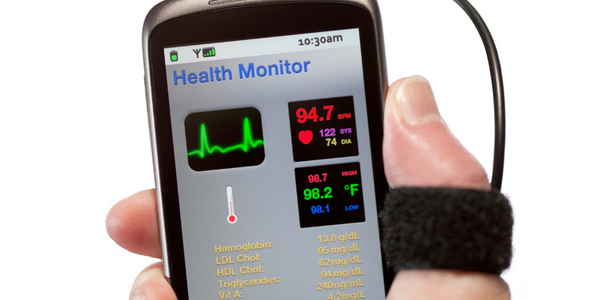Technology Category
- Analytics & Modeling - Predictive Analytics
- Platform as a Service (PaaS) - Application Development Platforms
Applicable Industries
- Buildings
- Healthcare & Hospitals
Services
- Data Science Services
About The Customer
CareSource is a nationally recognized healthcare organization that provides member-centric health care coverage. Founded in 1989, CareSource is one of the nation’s largest Medicaid managed care plans. The company serves more than 2 million members across six states, supported by a growing workforce of 4,500. CareSource’s holistic model of care integrates insights into how to improve the health and overall well-being of its members and the populations it serves. The company's regional, community-based multi-disciplinary care management teams comb through the data and social aspects that could affect physical, mental, and psychosocial health.
The Challenge
CareSource, a nationally recognized healthcare organization, has been experiencing exponential growth over the past 30 years. This growth has led to an influx of new members, which the company's legacy data systems were unable to handle efficiently. The company had to resort to temporary solutions such as running jobs designed for monthly execution on a daily basis, which the systems were not designed to handle. This resulted in the expenditure of significant resources to maintain the systems. The company needed a modern data platform that could scale, perform efficiently, and be future-proof. The platform needed to be cloud-based and capable of serving as a single source of truth for all incoming data.
The Solution
CareSource deployed the Databricks Lakehouse Platform on Azure to fast-track its data analytics journey. This platform helped remove data silos and create a single source of truth for all incoming data. The company implemented a three-layer architecture with the help of Databricks experts. The first layer served as a way to ingest large amounts of raw data. Transformation logic and processing logic were written in Databricks notebooks to feed into an integrated layer that leverages an industry-standard data model: the IBM Universal Health Care Data Model. The second level of transformation occurred in the final layer to get the data into an easily consumable structure primed for downstream analytics use cases. Analysts at CareSource also used Databricks SQL to analyze the data in a more intuitive and visual way. Some analysts even used SQL directly within the Databricks SQL interface and planned to rewrite existing predictive models in a more efficient way within the Databricks environment.
Operational Impact
Quantitative Benefit

Case Study missing?
Start adding your own!
Register with your work email and create a new case study profile for your business.
Related Case Studies.

Case Study
Energy Saving & Power Monitoring System
Recently a university in Taiwan was experiencing dramatic power usage increases due to its growing number of campus buildings and students. Aiming to analyze their power consumption and increase their power efficiency across 52 buildings, the university wanted to build a power management system utilizing web-based hardware and software. With these goals in mind, they contacted Advantech to help them develop their system and provide them with the means to save energy in the years to come.

Case Study
Hospital Inventory Management
The hospital supply chain team is responsible for ensuring that the right medical supplies are readily available to clinicians when and where needed, and to do so in the most efficient manner possible. However, many of the systems and processes in use at the cancer center for supply chain management were not best suited to support these goals. Barcoding technology, a commonly used method for inventory management of medical supplies, is labor intensive, time consuming, does not provide real-time visibility into inventory levels and can be prone to error. Consequently, the lack of accurate and real-time visibility into inventory levels across multiple supply rooms in multiple hospital facilities creates additional inefficiency in the system causing over-ordering, hoarding, and wasted supplies. Other sources of waste and cost were also identified as candidates for improvement. Existing systems and processes did not provide adequate security for high-cost inventory within the hospital, which was another driver of cost. A lack of visibility into expiration dates for supplies resulted in supplies being wasted due to past expiry dates. Storage of supplies was also a key consideration given the location of the cancer center’s facilities in a dense urban setting, where space is always at a premium. In order to address the challenges outlined above, the hospital sought a solution that would provide real-time inventory information with high levels of accuracy, reduce the level of manual effort required and enable data driven decision making to ensure that the right supplies were readily available to clinicians in the right location at the right time.

Case Study
Intelligent Building Automation System and Energy Saving Solution
One of the most difficult problems facing the world is conserving energy in buildings. However, it is not easy to have a cost-effective solution to reduce energy usage in a building. One solution for saving energy is to implement an intelligent building automation system (BAS) which can be controlled according to its schedule. In Indonesia a large university with a five floor building and 22 classrooms wanted to save the amount of energy being used.

Case Study
Powering Smart Home Automation solutions with IoT for Energy conservation
Many industry leaders that offer Smart Energy Management products & solutions face challenges including:How to build a scalable platform that can automatically scale-up to on-board ‘n’ number of Smart home devicesData security, solution availability, and reliability are the other critical factors to deal withHow to create a robust common IoT platform that handles any kind of smart devicesHow to enable data management capabilities that would help in intelligent decision-making

Case Study
Gas Pipeline Monitoring System for Hospitals
This system integrator focuses on providing centralized gas pipeline monitoring systems for hospitals. The service they provide makes it possible for hospitals to reduce both maintenance and labor costs. Since hospitals may not have an existing network suitable for this type of system, GPRS communication provides an easy and ready-to-use solution for remote, distributed monitoring systems System Requirements - GPRS communication - Seamless connection with SCADA software - Simple, front-end control capability - Expandable I/O channels - Combine AI, DI, and DO channels








